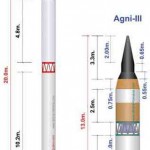Gazing at the Future
Of late, there have been many other developments in the field of aerospace power and related technologies in the Western world. Past experience shows that sooner or later these new technologies find their way in the developing world. It would thus be axiomatic that the region would see many unexpected developments. Some of the more important of these are listed below.
Solar and Renewable Energy Platforms
Much work is under way to develop solar and hydrogen cell powered aeroplanes and UAVs. Initially, difficulties in obtaining/generating more usable power and hence limitations of all-up weight might restrict these technologies to UAVs and light reconnaissance platforms but the potential is as yet not fully realised. e. g. The solar powered Zephyr flew for 82 hours in a test flight in 2008.2
End of Fossil Fuel
Availability and desirability of using fossil fuel for aviation may soon become a hotly debated issue if fears of climate change attain greater salience. The military aircraft would be most vulnerable. According to one estimate the US Air Force uses 2.5 billion gallons (approx 10 billion litres) of fuel each year. In 2008 it cost the US government nearly US$ 7 billion, slightly more than half the total fuel bill of the entire US government, to fuel its air force. It is also said that aircraft release about 600 million tons of CO2 each year but have a greater impact than other sources of combustion products because the aircraft directly delivers it into the atmosphere.
Use of airships and tethered balloons or “˜aerostats at high altitudes on the fringes of the earths atmosphere for reconnaissance, surveillance and ELINT gathering has been considered for some time.
Thus even though aviation accounts for just 8 per cent of the total use of refined oil, and only 3 per cent of greenhouse emissions, the overall climate effect is about 13 per cent. It is thus evident that soon military aviation would have to search for alternative sources and types of fuel.3 Many alternative fuels and even solar energy are being considered but which of these, if any, would suit the requirements of aviation is difficult to say at this time. In the near future fuel may thus become a major constraint to military aviation and may even adversely affect the production of some of the fighters and other platforms.
Use of Near Space
Officially designated to extend from 75,000 feet to 62 miles near space has been attracting the attention of aerospace research scientists for a variety of reasons. Use of airships and tethered balloons or ‘aerostats’ at high altitudes on the fringes of the earth’s atmosphere for reconnaissance, surveillance and ELINT gathering has been considered for some time. Absence of severe weather, strong winds, and above all, the low cost of manufacture and operation of these air ships/balloons are the main points in favour of such an idea. The major advantage is that such platforms could remain on station for weeks if not months and would be much cheaper than satellites and provide a continuous picture of activities in the areas of the ‘foot print’ of the platform. These may prove very useful in the future.4
Hypersonic and Scramjets
On 26 May, 2010 the Boeing Phantom Works and engine manufacturer Pratt& Whitney made X-51A WaveRider used a rocket booster and an air breathing scramjet (supersonic ram jet) engine to reach speeds of Mach 5 and created a record for the longest flight using such an engine. Hypersonic research has been with us for many years. The USAF SR-71 black Bird strategic reconnaissance aircraft could reach speeds of M 3 plus and remained in service for nearly three decades. The current programme’s fore runner was the X-43A that also used the scramjet and achieved speeds of Mach 9.6 in November 2004.
It is claimed that the WaveRider rides its own shock wave and has the potential for true hypersonic flight. The scramjet carries liquid hydrogen but scoops oxygen from the air as it travels at high speed. The engine has few or no moving parts with the compression of the oxygen being accomplished simply by passing through the engine. This frees the vehicle from the need to carry liquid oxygen which effectively reduces the pay load and hence makes it an attractive idea, e.g. the Space Shuttle needs 143,000 gallons of liquid oxygen that weighs a staggering 616,432 kg. Without this liquid oxygen the shuttle weighs a mere 74,842 kg.
Also read: Navies in the Indian Ocean
The scramjet cannot work at low speeds so it is accelerated to about Mach 4 by a Pegasus booster rocket. This combination is taken to 20-40, 000 feet by a specially designed B-52. Once the booster rocket reaches the high speeds it falls off, the scramjet engine is lit and it then travels on its own before a splash in the ocean. The longest flight referred to earlier lasted only 200 second, giving a clear estimate of the problems ahead. By 2030, this research is likely to present more options for high speed commercial and military flight.5
Micro and Hand Launched UAVs
Much work has already been done in this novel field. American and NATO soldiers are already using hand launched small UAVs to get a picture of what lies ‘on the other side of the hill’. Micro UAVs of the size of small birds capable of quietly sitting on a window sill have been developed to eavesdrop on the conversations inside the room.
The ability to pack ever bigger data in extremely small devices (the 8-10 GB pen memory for instance) and the possibility to make micro trans-receivers would certainly transform the way militaries communicate and transfer useful data. Micro UAVs would play a major role in the near future.6
Notes:
- Janes Defence weekly, Vol. 47, Issue 17, 28 April, 2010, p. 9.
- Hue Williams, Jane’s International Defence Review, Vol. 43.June 2010, pp. 82-87.
- Mark J. Lewis, “Military Aviation”, Aerospace America, September 2009, pp. 24-31.
- http://www.gaerospace.com/press-releases/pdfs/Near_Space_SpaceToys.pdf
- http://www.howstuffworks.com/hypersonic-plane.htm, jane’s Defence weekly, Vol. 47, Issue. 22, 02 June 2010, p. 5.
- Refer Note 20 above






The Indian Navy has a situation, where she will have three aircraft carriers, in three task forces for different seas and oceans surrounding the Indian Peninsula, and the aircraft carriers mean, the reach will be extended. Where would the task forces be operational? It seems, that south of the Indian Peninsula, between South America and the corresponding coastal latitudinal and longitudinal coastlines of Africa, and in the maritime region near the east of the Straits of Malacca. The aircraft carrier has a mix of aircraft, with anti submarine helicopters, sea patrol maritime anti-ship/sub aircraft, and jet multi-role fighters. The assets that will be represented with the aircraft carriers, like the biggest stealth warships, and submarines that may be nuclear, will be expecting a combat scenario, where merchant shipping will be choked and the sea lanes will be obstructed by naval enemy forces. There will be two or more naval engagements in these maritime regions, and this is a war of attrition, as a consequence.
The U. S. Navy has a fleet, with a similar scenario as the most distant possibility. There is no need for a huge navy, but does the U. S. naval forces portend a war scenario, where their navy is needed in all the oceanic regions, having subsidiary seas as very important combat maritime regions? If we look at the second world war, the seas weren’t as important as certain maritime regional identities, subsidiary to the seas, and the oceans had a large strategic plan.